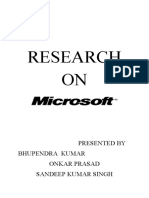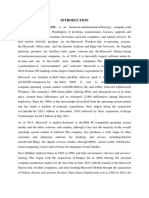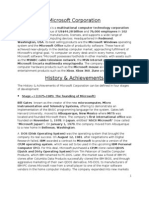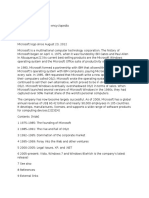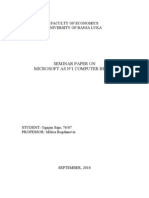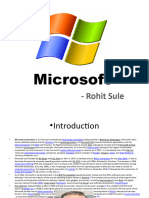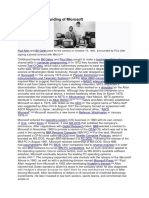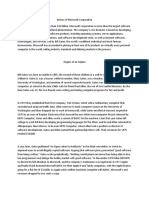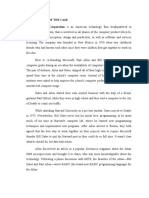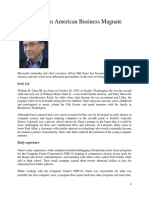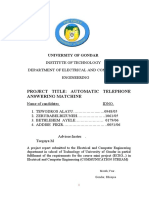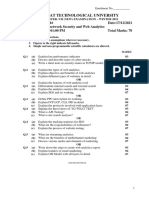0% found this document useful (0 votes)
34 views3 pagesMicrosoft Computer
Microsoft is the largest vendor of computer software in the world and was founded in 1975 by Bill Gates and Paul Allen to develop software for early computers. Microsoft developed the widely used MS-DOS and Windows operating systems. While early versions of Windows struggled, Windows 3.0, 3.1, and 95 gained widespread acceptance and popularity, leading Microsoft to become the dominant player in the personal computer software market.
Uploaded by
Mariñas Edralin J.Copyright
© © All Rights Reserved
We take content rights seriously. If you suspect this is your content, claim it here.
Available Formats
Download as DOCX, PDF, TXT or read online on Scribd
0% found this document useful (0 votes)
34 views3 pagesMicrosoft Computer
Microsoft is the largest vendor of computer software in the world and was founded in 1975 by Bill Gates and Paul Allen to develop software for early computers. Microsoft developed the widely used MS-DOS and Windows operating systems. While early versions of Windows struggled, Windows 3.0, 3.1, and 95 gained widespread acceptance and popularity, leading Microsoft to become the dominant player in the personal computer software market.
Uploaded by
Mariñas Edralin J.Copyright
© © All Rights Reserved
We take content rights seriously. If you suspect this is your content, claim it here.
Available Formats
Download as DOCX, PDF, TXT or read online on Scribd
/ 3


